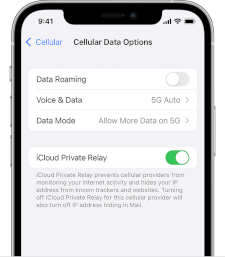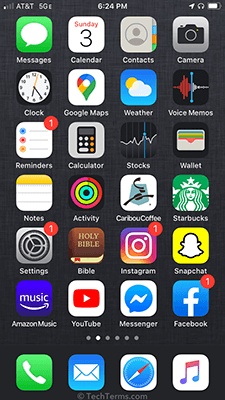5G
5G is the fifth generation of cellular data technology. It succeeds 4G and related technologies, including LTE. The first 5G cellular networks were constructed in 2018, while 5G devices became widespread in 2019 and 2020.
5G vs 4G
Benefits of 5G include faster speeds, low latency, and greater capacity. The theoretical maximum data transfer rate of 5G is 20 Gbps (2.5 gigabytes per second). That is 20x faster than LTE-Advanced, which has a peak download speed of 1,000 Mbps. 5G latency (the time to establish a connection) is estimated to be 10 to 20 milliseconds, compared to 4G's average latency of 40 ms. The maximum traffic capacity of 5G is roughly 100x greater than a typical 4G network.
5G Multiband
Compared to previous cellular technologies, 5G uses a wider range of frequency bands. Instead of broadcasting all signals at a low frequency, 5G supports multiple frequencies that can be optimized for different areas. For example, low frequencies travel further but do not provide high data transfer rates. These are ideal for rural areas with a long distance between cellular towers. High frequencies have limited range and are highly impacted by physical barriers, but they support faster speeds. These are ideal for densely populated areas with large numbers of cell towers.
5G frequency bands are separated into three categories:
- Low-band - broadcasts at low frequencies between 600 and 1,000 MHz, providing download speeds in the range of 30 to 250 Mbps. Both the frequency and range are similar to a 4G signal.
- Mid-band - broadcasts between 1 and 6 GHz and provides speeds of 100 to 900 Mbps. The range of each cell tower is several miles radius. Mid-band is expected to be the most widely deployed.
- High-band - broadcasts at ultra-high frequencies between 25 and 40 GHz. The short "millimeter waves" provide data transfer speeds above one gigabit per second. High-band 5G has a limited range of about one mile. It is ideal for city centers, sports stadiums, and other public gathering areas.
NOTE: While the maximum data transfer rates of 5G are much higher than 4G, actual speeds depend on the quality of the signal. The speed of high-band 5G signal, for instance, may drop by 50% if you step behind a building or walk a block away from the closest cell tower. With mid and high-band 5G, it is especially important to have a strong signal.
 Test Your Knowledge
Test Your Knowledge
